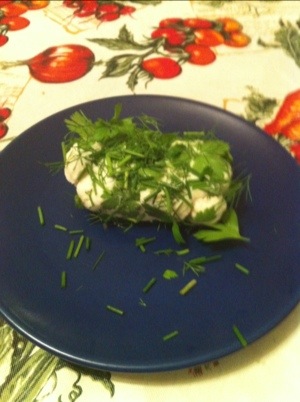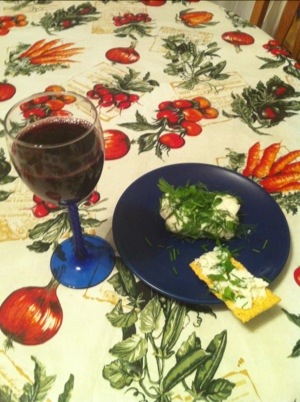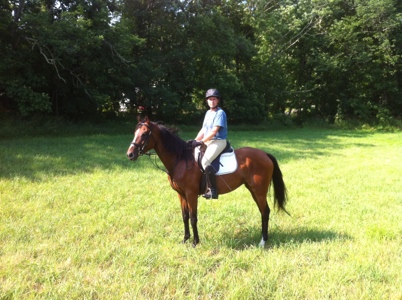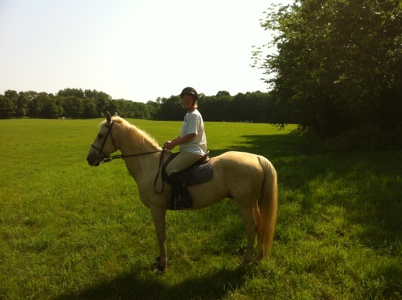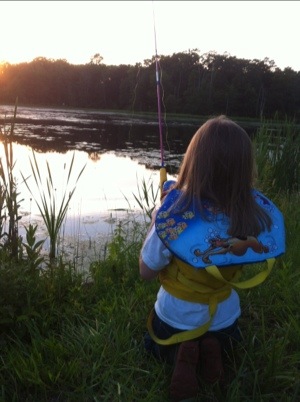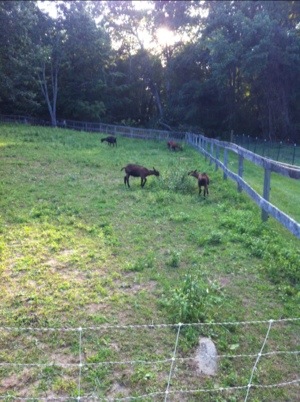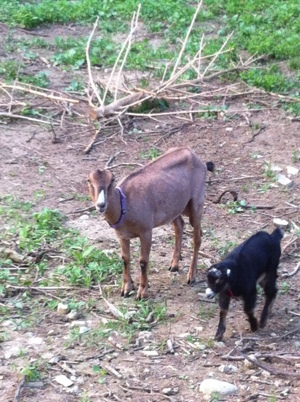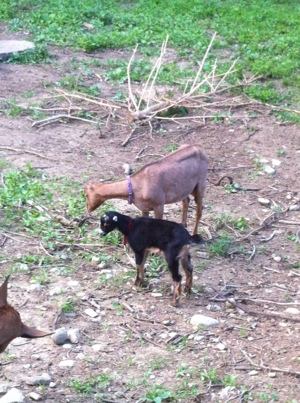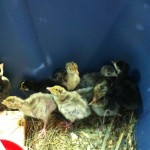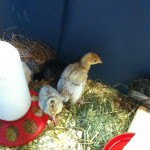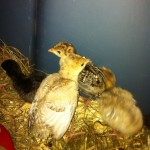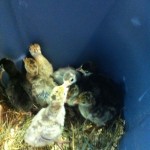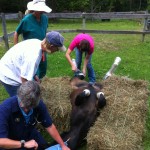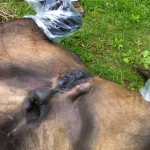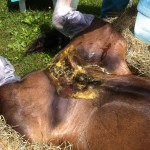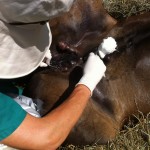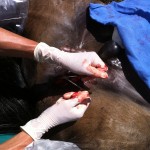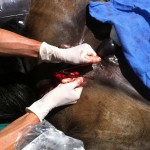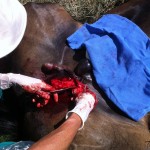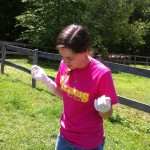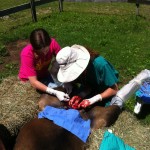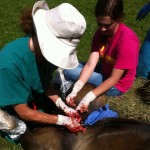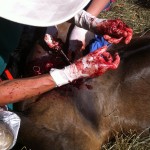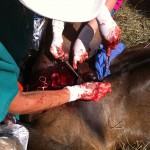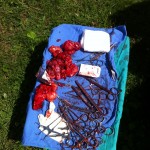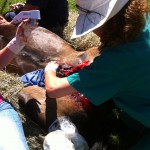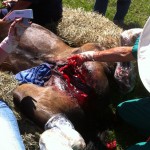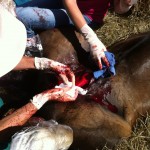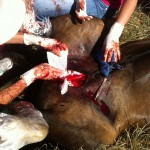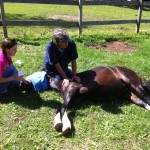Warning: This post contains explicit details and graphic pictures of equine cancer surgery.
Last summer, we got Vicki a Paint pony named Devil in Disguise (Devil). He has been absolutely fabulous with the kids and Anna uses him for teaching lessons to new riders. In late April, we noticed an unusual lump on his sheath, so we decided to have Salem Valley Vet out to evaluate the issue. Salem Valley came and took a small cell sample for analysis, but was pretty certain it was a sarcoid tumor. In the about 3 weeks from when we first noticed the tumor until Salem Valley checked it, Anna and I both noticed a definite size increase in the tumor. The recommendation came back to book him for surgery at Tufts.
As we were moving through this, I met Dr. Kara Kneser at a 4H goat showing clinic, and she referenced me to Dr. Anne Schwartz of Tri State Equine Surgical Specialists. Based on the cost estimate from Tufts, we decided to have Dr. Schwartz give us a second opinion. Dr. Schwartz has experience working in equine hospitals in Florida and a couple of years ago moved to RI to branch out on her own. Right now she is specializing in on-farm surgery. We did a consult with her to evaluate the tumors. The advantages of doing on-farm surgery are lower stress (no trailering, familiar environment, etc), convenient, maybe better recovery, and cost. Of course, the risks are higher because there are no monitors and fewer options if things go bad. We decided to accept the risks and cost because Devil is only 9 and has many more years ahead of him. Due to some shifting schedules, the surgery got moved up to today.
Dr. Schwartz did the actual surgery and Dr. Kneser was the anesthesiologist. The surgery was actually conducted in the grassy area just outside our barn. They started by sedating Devil and then actually giving him the anesthesia. Once he was down and on his back, Dr. Schwartz got to work. It was about 2 hrs, 15 minutes from her first incision until she finished sewing him up as much as possible. Brittany Banning introduced us to Devil in the first place, and since she is a vet student, we invited her to the surgery. Dr. Schwartz let her jump in to help. The tumors were much more involved than any of us had imagined. Samples are being sent for analysis to confirm the are sarcoids. In all, 1-1.5 lbs of tumors were removed, and a number of times Dr. Schwartz commented on how in over 20 years she didn’t remember seeing any sarcoids that involved. There were a few touchy points when his heart rate dropped or his breathing got irregular, but in the end, he survived the surgery.
It took about 45 minutes for the anesthesia to wear off and for him to stand up. At first, 5 of us were helping keep him from falling back over. After a while, Vicki came up to check on him. Devil was very happy to see Vicki and actually, kept stepping forward to get closer to her. We used Vicki to lead him back to his stall.
Devil will be on stall rest for 1-2 days, and then get to go back out. He will get 4-5 chemotherapy injections throughout the summer where the tumors were located. How he does will determine how long until Vicki gets to ride him again, but probably about 2 months.
We are very pleased with the work that Dr. Schwartz and her team did, and definitely give them a “4 hooves up” endorsement.
What follows are pictures from the surgery.

